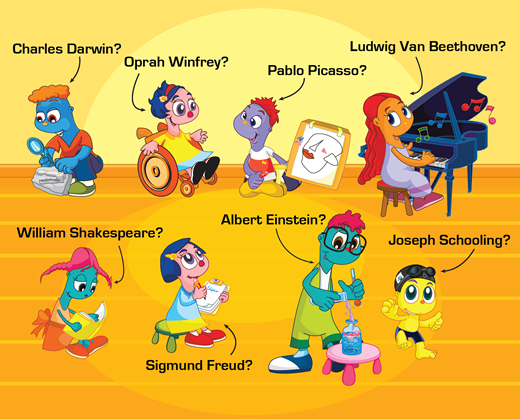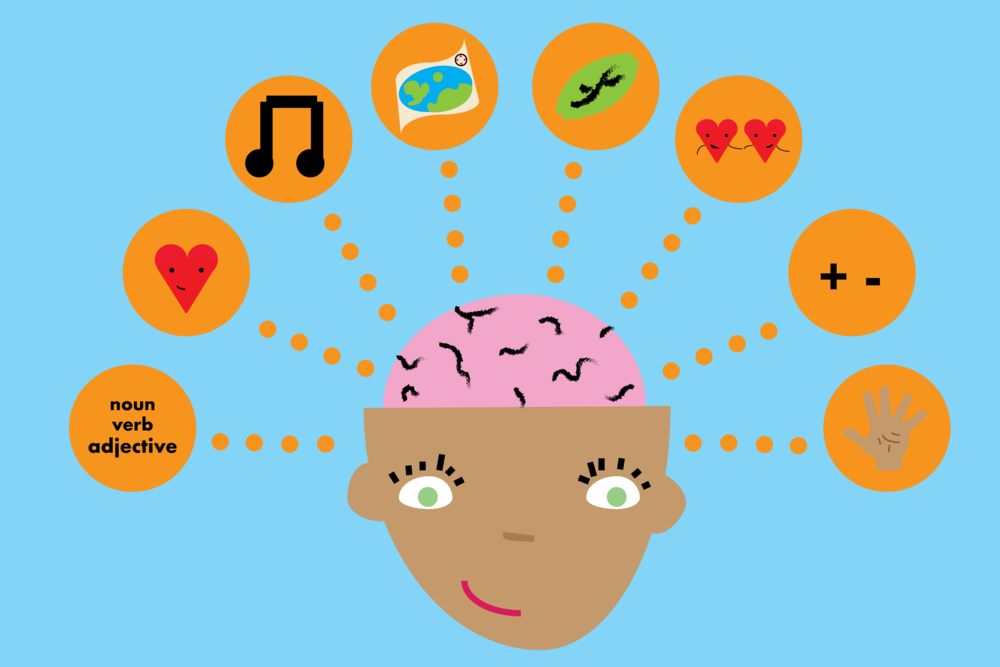The Kinderpillar curriculum focuses on helping children build the essential critical, creative and flexible thinking skills that will support their learning and study throughout their lives. A large part of this is related to the STEM (Science, Math, Engineering, Math) or STEAM (Science, Math, Engineering, Art, Math) activities that are at the heart of the Kinderpillar Schools. How do these activities relate to the work of Harvard education, Dr. Howard Gardener? Read on for examples of the importance of understanding Multiple Intellegences and supporting inventive thinking. This is the first in a multi-part series from Prof. Ellen Booth Church.
As children leave the classroom on the way to the playground they spy a collection of huge appliance boxes in the hall. You can feel the excitement in the air as the children examine the size and shape of their magnificent finds. When the teacher asks, “What can we do with these boxes?” the floodgates spring open and a multitude of ideas pour out. Each idea reflects the viewpoint or intelligence of the child suggesting it.
“Listen” carefully as Dr. Howard Gardner’s Theory of Multiple Intelligences is demonstrated by the way each child approaches the task of inventing with the same object: appliance boxes!
“We can use the boxes as drums!” says Jeff, a musical thinker. He immediately starts tapping on the different size boxes…turning them into quite a rhythm section!
“How many small boxes will fit inside the really big box? Can we put them all inside to make a nest?” wonders Jamal, a mathematical thinker. His ability to understand the basic properties of number, size and shape supports his interest in experimenting with estimations and exploring cause and effect.
“I want to jump in and out of the boxes. Let’s put them in a line and play follow the leader” says Denise, a kinesthetic thinker. She likes to use her body to solve problems and express ideas.
“Everyone is talking too much! I think we have to listen to everyone’s ideas.” offers Bruce, an interpersonal thinker. His ability to understand other people and interest in solving conflicts causes him to focus more on the children than the boxes!
“We could tell the story of the Three Bears! See this box can be Papa’s bed, this one is Mama’s and this little on is for Baby bear,” says Rich, a linguistic thinker. His easy use of language and ability to tell and appreciate stories helps him to see the “story” within the boxes.
“Look! The boxes can be put together to make rooms in a house.” offers Bethany a spatial thinker. She likes to use her ability to form a mental image or large layout.
“We can take them outside and make them into houses for the animals in the playground.” says Mick, the naturalist. His interest in animals and outdoors causes him to see that the boxes could be useful as “homes” for the birds and animals he watches each day on the playground.
“I feel so excited to think about what to do!” says Susan…ever the intrapersonal thinker…summed it up for everyone. Her ability to understand her own feelings helped others feel their feelings too!
Back in the classroom the children’s teacher gathered the group together to talk about all the ideas and choose one or more to actually do. Collecting children’s suggestions on chart paper, she validated each child’s ideas by putting them in writing. After much discussion and more brainstorming, it was decided that the class wanted to use the biggest box to create a “book house” in the library corner and the others to make a “box obstacle course” out on the playground. The group also decided that the really needed MORE boxes to be able to do everything that was suggested!
“INVENTORS AT WORK”
USING DIFFERENT LEARNING STYLES
Harvard educator and creator of Multiple Intelligences theory, Dr. Howard Gardner has said, “I define an intelligence as the capacity to solve problems or make things that are valued by a culture.” Classroom invention activities are one of the best ways to provide children with opportunities to use their varied intelligences to do just that!
As you can see by “the class and the boxes” story, children approach the same product and project in different ways. That is part of the joy in doing invention activities with children. Inventions are an open window into children’s thinking processes and interests. Watch and listen as children explore a new material and you will learn a great deal about them. Some children will be very organized as they explore the sizes and shapes of the boxes while others will immediately use them in a dramatic play scenario. All children will show you their interests as well as their creative and critical thinking skills and problem solving abilities. These are all essential skills for mastery in any curriculum area and life!

Your Important Role in Supporting Invention
All you really have to do to get your “little inventors” to work is present children with engaging materials and set the stage for creating. They can take it from there! Of course, you still play an important role. Children need your continued attention, good questions and narration to keep them thinking and growing. During invention activities you play a many faceted role as observer, supporter, facilitator and model. Here are a few ways you can support:
The Observer: It is important to watch/listen and follow children’s lead with invention materials. They often have different (and better!) ideas for how to use or do things.
The Supporter: You can support by positively acknowledging children’s efforts. Support by specifically stating what it is you notice that they are doing. “Look at all the different ways you are using the boxes. Putting this smaller one on top of the other was a good idea because it won’t fall off.”
The Facilitator: You can be a facilitator by adding just the right provocative question when children are engaged in inventing can propel children into new ways of thinking. Open-ended questions invite children to think creatively and problem solve because these questions do not have only one right or wrong answer! Try questions such as:
· What do you think?
· What should we try?
· How many ways can you…?
· How can we make something better?
· What do you think will happen next?
· What would happen if…?
The Modeler: Whether or not you are aware of it, children are always watching you! That is why it is also important to be a “model inventor” for children. As they observe you invent and create solutions they see a valuable example of how inventive thinking is a part of life. One way to do this is to narrate your creative thinking for children to hear. For example, you might say, “I have an interesting problem. We ran out of finger paint paper. I wonder what else we could use to paint on today.” You are modeling an attitude as well as process for creative thinking with everyday situations. Plus you are also using and emphasizing important creative thinking vocabulary words such as think, problem, wonder. Children will begin to use these words to describe their own creative thinking process.
Temenos: Taking Time and Space
Time to explore and invent is important. Children can’t invent in a 20 minute “free-play” segment. Young children deserve what the ancient Greeks called temenos: the “sacred” or protected space and time to do deep work. You can do this by honoring children’s inventions as the important work that supports their learning in all curriculum areas. Inventing is not something that is separate from your educational curriculum and standards. It is actually a place that all your standards and curricula come together and are given a place to bloom in the meaningful application of skills and understandings.
Inventing Builds Thinking Skills
Creative thinking is a life skill…one that children can joyfully apply to everything they do for the rest of their lives. As you know, memorizing content information such as the names of the colors, letters and numbers is not what makes a child a “thinker”. It is the ability to USE this information (and materials) in new ways that is important for children to truly understand the content information. It is the ability to think, learn and experiment with objects, language and each other that helps children achieve! As children grow up and live in a world that the only constant is “change”…it is important for children to know what to DO with the facts. In an ever-changing world children need to know how to use “what is there” to create “what is needed”.
Invention activities invite children to use critical thinking and two aspects of creative thinking: fluent and flexible thinking.
Critical thinking: is the ability to mentally break an idea or problem into parts. By looking at the pieces of a problem it becomes easier for children to solve it. Sorting, comparing similarities and differences, and classifying are all common critical thinking processes young children use. For example, when you ask children to compare different size boxes to invent the strongest bridge, they are practicing critical thinking skills.
Fluent thinking is the ability to generate or “brainstorm” ideas. It can happen when children are working with thoughts or hands-on with materials. Thinking of all the different ways to get to school or naming all the things you can thing of that are “blue” are examples of fluent thinking.
Flexible thinking is the ability to see many possibilities, or view objects or situations in different ways. Young children are often masters of flexible thinking. They use it when they turn a flowerpot into a hat or a spoon into a microphone, or when they think of the many reasons why a child in a picture or story might be feeling sad.
Hopefully you have a new view on the importance of invention and multiple intellegences. We will continue this series in the next installment.- Prof. Ellen
This article first appeared in Early Childhood Today magazine:
https://www.scholastic.com/teachers/articles/teaching-content/inventing-together/

